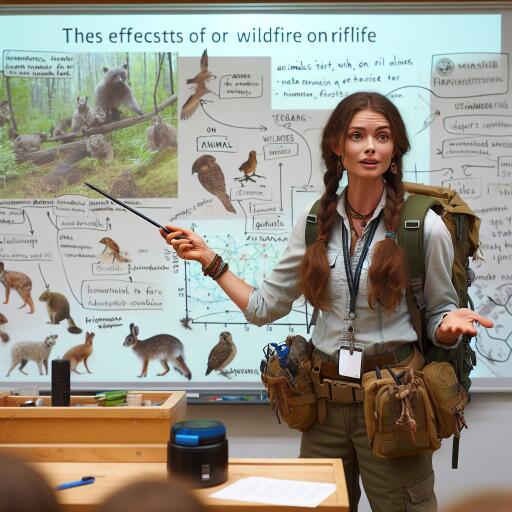
Ecologist Taylor Zagelbaum discusses effects of fire on wildlife and finding her career in ecology
In the heart of Riverside County’s Hidden Valley Wildlife Area, natural resource specialist Taylor Zagelbaum is dedicated to preserving diverse ecosystems. Her mobile office, alive with animal and insect posters and accompanied by a bubbling fish tank, sets the stage for her vital work.
From this serene setting, Zagelbaum manages the delicate task of monitoring southern California’s rich biodiversity, an area she praises as a “biodiversity hotspot.” Her work primarily involves tracking native species and restoring habitats devastated by the increasing frequency of wildfires.
Zagelbaum emphasizes the growing threat these fires pose, remarking on the continual occurrence of one fire following another. In collaboration with the Bureau of Land Management, Zagelbaum and her team devise strategies to curtail the damage. By creating protective fire lines, they aim to preserve adjacent areas that are yet untouched by flames.
Unfortunately, not all species can flee the advancing fires. The plight of the Quino checkerspot butterfly, a species struggling to survive, deeply concerns Zagelbaum. She is currently formulating a restoration action plan to nurse the charred habitat back to health, with hope that next year’s surveys will shine a light on their progress. There is optimism in the potential for new hybrids that might withstand future fires more resiliently.
For aspiring ecologists, working at the interface of plants and animals is often a dream. However, breaking into this field can be challenging. Zagelbaum offers insights and advice for budding students aiming to become wildlife guardians.
To those eager to follow in her footsteps, Zagelbaum stresses the invaluable experience of internships. Reflecting on her career, she wishes she had engaged in more internships early on and suggests taking part in activities like habitat restoration and the removal of invasive species.
She encourages students to get their foot in the door by volunteering, mentioning that organizations like the Audubon National Bird Society and California Bat Working Group might offer opportunities for proactive students bold enough to reach out.
As a woman in ecology, Zagelbaum shares the challenges she’s faced, including experiences of misogyny during her academic pursuits. Yet, she sees a positive shift towards inclusivity as more women enter and thrive in the field. Today, she is supported by an encouraging work environment.
Offering candid advice to newcomers, she acknowledges that the work is not always as glamorous as it may seem. Sharing a past experience, she recalls checking underpasses for desert tortoises in less-than-ideal conditions, emphasizing that conservation work often involves getting your hands dirty in unremarkable locations.
Zagelbaum’s path was paved with setbacks and rejections despite holding a master’s degree. “You have to give a lot of your time,” she relates, highlighting the importance of perseverance and building relationships within the field, which is highly competitive.
For students considering transfer schools, she advises researching professors for their specialty areas to maximize available resources and foster valuable connections.
Encouraging STEM students who may feel overwhelmed, Zagelbaum assures them there’s hope. Reflecting on her experiences, she notes that academic records matter less than the diploma itself in her career, urging students to keep sight of their goals: “You got this.”





Leave a Reply